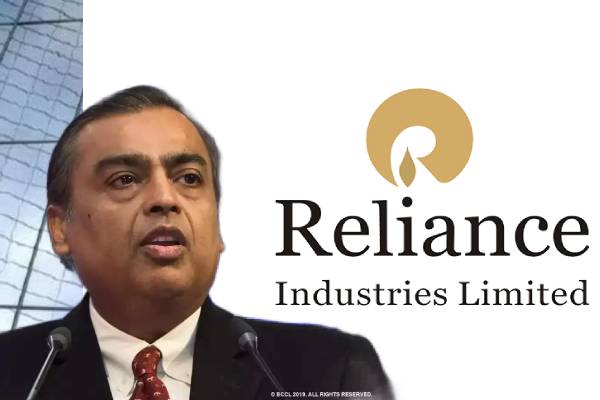U.S. Firms Implement Cost Reduction Strategies In Response To Tariffs

Table of Contents
Reshoring and Nearshoring
Faced with escalating tariff costs, many U.S. companies are exploring options to bring manufacturing closer to home. This involves two primary approaches: reshoring and nearshoring. Reshoring refers to returning manufacturing operations from overseas to the United States, while nearshoring involves relocating production to neighboring countries.
Benefits and Challenges of Reshoring
- Reduced transportation costs: Shipping goods from across the globe is expensive. Bringing production back to the U.S. significantly reduces these costs.
- Improved supply chain control: Domestic production offers greater control over the entire supply chain, minimizing disruptions and improving responsiveness to market demands.
- Potential for job creation: Reshoring can lead to significant job creation within the U.S., boosting the domestic economy.
- Higher labor costs in the U.S.: Labor costs in the U.S. are generally higher than in many other countries, potentially offsetting some of the benefits of reshoring.
- Potential infrastructure limitations: Some regions of the U.S. may lack the necessary infrastructure to support large-scale manufacturing operations.
Benefits and Challenges of Nearshoring
- Lower labor costs than domestic production: Nearshoring offers lower labor costs compared to domestic production, while still providing geographical proximity.
- Shorter transportation times: Reduced shipping distances lead to faster delivery times and lower transportation costs.
- Closer proximity to markets: Nearshoring allows for quicker responses to market changes and customer demands.
- Potential for political instability in nearshoring locations: Political instability in nearshoring countries can disrupt operations and increase risk.
- Language and cultural barriers: Differences in language and culture can pose challenges in managing operations and building relationships with local suppliers and workers.
Examples of successful reshoring include companies like Whirlpool, which has invested heavily in expanding its U.S. manufacturing capabilities, and Caterpillar, which has brought back some of its production from overseas. Quantifiable results vary significantly based on the industry and specific company, but cost savings and improved supply chain control are consistently reported as key benefits.
Automation and Technological Advancements
Embracing automation technologies is another crucial strategy for U.S. firms to mitigate the impact of tariffs. Robotics, artificial intelligence (AI), and other advanced technologies can significantly increase efficiency, reduce labor costs, and improve productivity.
Impact of Automation on Labor
- Job displacement in some sectors: Automation can lead to job displacement in sectors heavily reliant on manual labor.
- Creation of new jobs in technology and maintenance: The implementation and maintenance of automated systems create new job opportunities in technology and related fields.
- Potential for retraining and upskilling programs: Retraining and upskilling initiatives can help displaced workers acquire new skills to adapt to the changing job market.
Return on Investment (ROI) of Automation
- Initial high investment costs: Implementing automation technologies often requires significant upfront investment.
- Long-term cost savings through increased efficiency: Over time, automation leads to substantial cost savings through increased efficiency and reduced labor costs.
- Reduced waste: Automated systems often minimize waste and improve product quality.
- Improved product quality: Automation can lead to more consistent and higher-quality products.
Many U.S. manufacturing companies are already adopting automation to improve efficiency and lower costs. Companies like Ford and General Motors are investing heavily in robotics and AI to streamline their production processes.
Supply Chain Diversification
Relying on a single source for imported goods exposes businesses to significant risks, particularly in the face of tariffs. Diversifying the supply chain by sourcing materials and components from multiple countries is a vital strategy for mitigating these risks.
Strategies for Supply Chain Diversification
- Sourcing materials from multiple countries: Reducing reliance on a single supplier by establishing relationships with suppliers in various countries.
- Developing alternative supplier relationships: Identifying and vetting potential alternative suppliers to ensure supply chain resilience.
- Building strategic partnerships: Developing long-term relationships with key suppliers based on mutual trust and collaboration.
- Implementing robust risk management strategies: Developing and implementing risk management plans to address potential disruptions and mitigate their impact.
Challenges of Supply Chain Diversification
- Increased complexity in managing multiple suppliers: Managing multiple suppliers across different geographical locations and time zones adds complexity to supply chain operations.
- Potential for increased costs in the short term: Diversifying the supply chain may lead to increased costs in the short term as new relationships are established and processes are optimized.
- Need for strong supply chain management expertise: Effective supply chain diversification requires strong expertise in supply chain management, logistics, and international trade.
Companies like Nike and Apple have been actively diversifying their supply chains to reduce their reliance on specific countries and mitigate potential risks.
Negotiating with Suppliers
Effective negotiation with suppliers is crucial for mitigating the impact of tariffs. By securing better prices and terms, businesses can reduce their overall costs and maintain profitability.
Effective Negotiation Techniques
- Building strong supplier relationships: Developing strong relationships based on trust and mutual respect can facilitate better negotiation outcomes.
- Leveraging market intelligence: Understanding market conditions and supplier capabilities allows businesses to negotiate from a position of strength.
- Exploring alternative payment terms: Negotiating flexible payment terms can improve cash flow and reduce financial burden.
- Negotiating volume discounts: Securing volume discounts can significantly reduce the cost of goods purchased in bulk.
Importance of Transparency and Communication
- Open communication with suppliers about challenges and expectations: Open and honest communication is crucial for building trust and establishing a collaborative relationship.
- Collaborative problem-solving: Working collaboratively with suppliers to find solutions to shared challenges can improve outcomes for both parties.
- Establishing clear contracts and agreements: Clear contracts and agreements are essential for protecting the interests of both businesses and preventing disputes.
Conclusion
In conclusion, the impact of tariffs on U.S. businesses is undeniable. To mitigate the effects, implementing effective cost reduction strategies is paramount. This article highlighted four key strategies: reshoring/nearshoring, automation, supply chain diversification, and supplier negotiation. Each strategy offers unique advantages and challenges, and the optimal approach will vary depending on the specific industry and business circumstances. We urge U.S. firms to proactively assess their current strategies and explore options for implementing effective cost reduction strategies in response to tariffs to ensure long-term competitiveness and profitability. Don't wait for the next tariff increase; begin exploring options for mitigating tariff impacts and implementing U.S. firm cost reduction strategies today.

Featured Posts
-
 Update Search Continues For Missing British Paralympian In Las Vegas
Apr 29, 2025
Update Search Continues For Missing British Paralympian In Las Vegas
Apr 29, 2025 -
 Ten Month High For Reliance Shares Earnings Drive Significant Gains
Apr 29, 2025
Ten Month High For Reliance Shares Earnings Drive Significant Gains
Apr 29, 2025 -
 Venture Capital Secondary Market A Hot Investment Opportunity
Apr 29, 2025
Venture Capital Secondary Market A Hot Investment Opportunity
Apr 29, 2025 -
 Ai Thinking More Hype Than Substance A Critical Analysis
Apr 29, 2025
Ai Thinking More Hype Than Substance A Critical Analysis
Apr 29, 2025 -
 Donald Trump Advocates For Pete Rose Pardon And Hall Of Fame Inclusion
Apr 29, 2025
Donald Trump Advocates For Pete Rose Pardon And Hall Of Fame Inclusion
Apr 29, 2025
Latest Posts
-
 Het Einde Van Een Icoon Thomas Mueller En Bayern Muenchen Gaan Uit Elkaar
May 12, 2025
Het Einde Van Een Icoon Thomas Mueller En Bayern Muenchen Gaan Uit Elkaar
May 12, 2025 -
 Het Afscheid Van Thomas Mueller Een Bittere Pil Voor Bayern Muenchen
May 12, 2025
Het Afscheid Van Thomas Mueller Een Bittere Pil Voor Bayern Muenchen
May 12, 2025 -
 De Vernedering Van Kompany Analyse Van De Mislukking
May 12, 2025
De Vernedering Van Kompany Analyse Van De Mislukking
May 12, 2025 -
 Kompanys Team Lijdt Vernederende Verlies
May 12, 2025
Kompanys Team Lijdt Vernederende Verlies
May 12, 2025 -
 Bitter Einde Voor Bayern Muenchen Het Vertrek Van Thomas Mueller
May 12, 2025
Bitter Einde Voor Bayern Muenchen Het Vertrek Van Thomas Mueller
May 12, 2025
